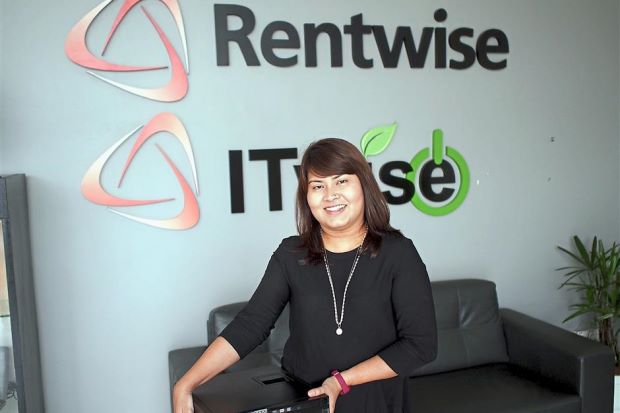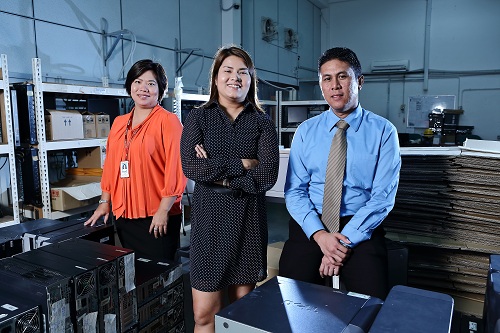
With Malaysians facing the brunt of lockdown by spending more and more time on our screens, it’s easy not to realise that even something as simple as surfing the web for hours can greatly increase the amount of carbon emissions generated by the energy consumption of data centres.
And with overuse, it also quickly invites wear and tear on devices, leaving those unaware of greener solutions to simply dump their once technological marvels – behind a massive carbon footprint while contributing to waste.
As Malaysia’s leading Green IT Infrastructure Services provider in Malaysia, we at Rentwise look to provide locals with a two-hit solution to not only neutralise their carbon emissions, but to also help the environment heal from the destruction wrought upon them. To achieve this, we look to decarbonisation and reforestation – keep on reading to find out how this works.
Simply put, the term “decarbonisation” literally means the reduction of carbon, by sustainably reducing and compensating the emissions of carbon dioxide (CO2). It’s also known as carbon neutrality, meaning that carbon dioxide output has a net neutral impact on the environment, which in return could help stem the effects of climate change. It is a known fact that greenhouse gasses like carbon dioxide increase average temperatures worldwide – leading to rising sea levels, changing weather patterns, and other factors associated with climate change.
Decarbonisation or carbon neutrality is usually achieved through the increased use of low-carbon power generation, large-scale use of electric vehicles via “clean” technologies, as well as the reduction in the use of fossil fuels. The latter would typically be replaced with renewable energy sources such as wind power, biomass, or solar power.
Decarbonisation or carbon neutrality is usually achieved through the increased use of low-carbon power generation, large-scale use of electric vehicles via “clean” technologies, as well as the reduction in the use of fossil fuels. The latter would typically be replaced with renewable energy sources such as wind power, biomass, or solar power.
As you know, deforestation is the removal of a forest or a wide area of trees from land, which is then typically converted to commercial and industrial use. Now think of the opposite of that, and you get reforestation.
Reforestation can either be the natural or intentional “restocking” of these depleted lands, which can greatly improve the quality of human life and rectify the negative effects of deforestation. This includes the rebuilding of natural habitats, rebalancing ecosystems, and mitigating global warming through the biosequestration of carbon dioxide. Reforestation is basically one of the best methods in tackling climate change.
At Rentwise, we’re committed to becoming Net Zero by 2030 through our circular business model that allows you to offset your carbon footprint, while our Reforestation Initiative is our part in helping to reverse the climate crisis and halting the destruction of the environment.
Did you know that a total of 15 laptops can actually generate as much carbon emissions as a mid-sized car? In 2019 alone, the shipment of new PCs to Malaysia exceeded 2.3 million units – which drastically increased our carbon emissions.
This is where our Remanufacturing process comes into play to help with decarbonisation. This is a standardised industrial process by which we salvage and remanufacture retired equipment, which returns them to a same-as-new or better condition in appearance and performance. Compared to the plain process of repair, refurbish, or reuse, this not only extends the life cycle of the product, but also eradicates waste generation, while helping to offset about 75-80% of carbon footprint.
But what of the residual amount? Then we make our way to the Race to Net Zero Package, where we offer the opportunity to give back to the environment and offset remaining carbon footprint by reforestation.
As the country – and the world – slowly shifts to a more remote workforce and greater reliance on technology, we should make the effort whenever possible to combat their negative effects. After all, at the end of the day, our ambitions and daily necessities should not cost the Earth.
By choosing Rentwise remanufactured laptops or desktop PCs, companies and organisations can choose whether to plant a tree in Nepal, Kenya, Italy, Haiti, Honduras, Madagascar, Tanzania, Colombia, Cameroon, Guatemala, Ghana, or Equador in their name. They will then be provided information about the impact of their tree – each tree will be able to absorb up to 350kg of CO2, the community that takes care of it, updates on the project progress, as well as geolocation and photographing of the trees when planted.







